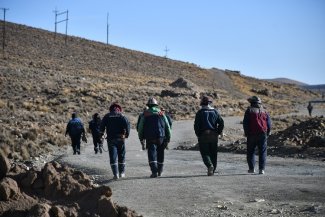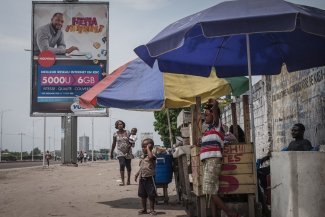Nearly half of workers aged 15 to 29 in Asia and the Pacific are self-employed and two in three youth are in paid work without a written contract, says a new report by the International Labour Organisation (ILO).
According to the study Labour market transitions of young women and men in Asia and the Pacific, informality and vulnerable employment are the reality for the vast majority of young workers in region.
While unemployment remains an important concern for young people in the region, the low-quality of work is by far a bigger problem. Of those who do have jobs, very few have a written employment contract or access to core benefits like paid sick leave or social security coverage.
“The lack of prospects for secure employment, along with increased education, access to modern technology and exposure to the perceived advantages of developed economies, create the risk of frustration among youth. This, in turn, can culminate in political unrest and external migration,” says Sara Elder, ILO youth employment specialist and author of the report.
The findings are based on school-to-work surveys carried out in 2012-13 among young people in five countries (Bangladesh, Cambodia, Nepal, Samoa and Vietnam), under the ILO’s Work4Youth (W4Y) Project – a global partnership between the ILO and The MasterCard Foundation.
The countries’ average youth unemployment rate was 14.2 per cent, ranging from 3.8 per cent in Cambodia to 28.9 per cent in Nepal.
The unemployment rate of young women exceeded that of their male counterparts in all five countries; the average female youth unemployment rate was 19.9 per cent, compared to the male rate of 11.9 per cent.
The percentage of young people in informal employment ranges from 67.7 per cent of young workers in Samoa to 98.3 per cent in Cambodia. Here women are also at a disadvantage.
In all five countries young men were more likely to find stable, regular employment and to earn higher wages.
The education and employment link
The report found close links between education and employment. One concern identified is that educational attainment in the region remains comparatively low, despite recent progress.
In Bangladesh, Cambodia and Nepal, more than 50 per cent of young people finished education at primary level or below.
In Cambodia and Nepal young women are more likely to drop out early. The most frequent explanation given for this was “economic reasons”, thus implying that household poverty will perpetuate itself to the next generation.
Although lack of education is not an obstacle to finding work, (in fact unemployment rates increase with the level of education), the results clearly show that investing in education brings positive returns in terms of wages and access to “better” jobs.
However, there is also a high level of mismatch between qualifications and work in all five countries. More than half of young workers in Bangladesh, Cambodia and Nepal are under-educated for the work they do. This can have a negative impact on worker productivity and so on enterprise output, and can also affect the individual’s sense of security.
At the same time over-education is also a concern. In Viet Nam, nearly one-quarter (23.5 per cent) and in Samoa more than one-half (59.6 per cent) of young workers are over-educated for the work they do.
These young people are likely to earn less than they could and are not making the most of their productive potential.
The report is intended to assist governments to place youth employment at the heart of their political agendas and to provide information for the design and monitoring of effective policy responses.
To help more young people find quality jobs the report proposes a range of government actions, including designing macroeconomic policies to promote job growth, ensuring educational access for all, preventing young people leaving education early, and strengthening support for informal enterprises.
This article was initially published on the ILO news website.








